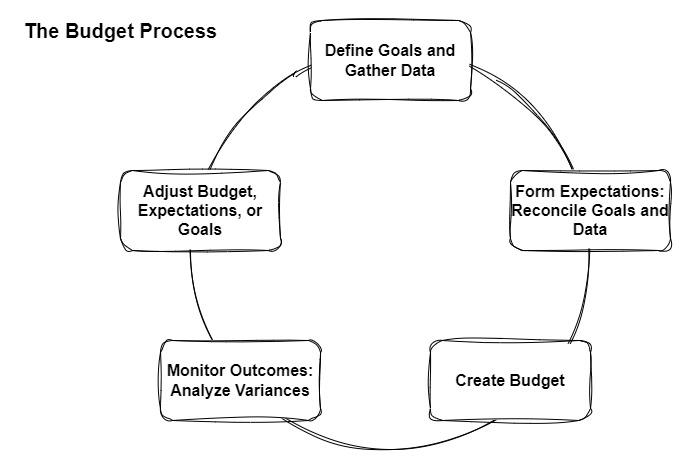What is Budgeting Process in Project Management?
Last Updated :
15 Apr, 2024
The budgeting process in project management is the way of creating plans for how to spend and use money in an organization. It also helps you determine how much money is available for the project. Planning of budget is like creating a roadmap for your finances. It is a process that helps you understand the cost boundaries for your project. The budget serves as guiding project managers and stakeholders on how much resource they have to use.
There are two types of budgets in project management:
1. Resource Budget
It is designed in the starting phase of the project. This report budget can be updated to show the changes in the project requirements. It is for all the cost allocation of internal resources. The internal resources include Salaries, travel expenses, purchases of the equipment, and materials required to build the project.
2. Financial Budget
How a financial resource is allocated to the project comes under this. It includes payments to vendors for carrying goods, costs of contractors, etc. A financial budget is created along with the resource budget, it ensures that the project has all the funds that it requires. It is managed by the finance department.

Budget Process
Basic Elements of Project Budgeting
Project Budgeting is the main aspect of the project management. It includes cost estimation for the various project activities. Some of the basic elements of budgeting are:
- Cost Estimates: Based on different factors, there are two types of costs- direct and indirect. Direct cost is of labor, materials, equipment whereas, indirect cost is of administrative expenses.
- Resource Planning: Identification and allocation of resources according to the project needs.
- Labor Costs: It estimates all the cost of labor, including daily wages and all the additional expenses.
- Risk Management: Different risks are identified that could impact the project.
- Documentation and Reporting: Documentation of budgeting process is done on regular basis, which helps in decision-making.
Steps to Create a Project Budget
It is most important to create and plan the cost requirements of a project. Here are some steps to create a project budget:
- Analyze costs: First of all you need to identify that which type of cost you want to use fixed aur variable that change with the time.
- Negotiate costs with suppliers: Discuss the cost with the supplier as soon as you analyze the cost requirements.
- Estimate your revenue: Predict the amount of money that will be generated after the completion of the project.
- Know your gross profit margin: Gross profit margin can be determined by subtracting the revenue generated with the cost of the sold products in terms of percentage.
- Project cash flow: In this phase you will get to know how much money you have to spend each month.
- Factor in seasonal & industry trends: In this predictions will be made based on seasonal activities and according to that the resources will be allocated to them. Historical data is used for future prediction.
- Set spending goals: You have now known your costs, revenue, and cash flow, you can start to set spending goals for your business.
- Bring it all together: After completion of all of the previous steps, you can start to bind together your final budget.
.jpg)
Steps to create a budget.
Benefits of the Budgeting Process
- Save Expenditure: It will save your excess expenditure on any resource which will save your cost.
- Efficient Resource Utilization: You can use the resources efficiently that contribute to project success and overall cost savings.
- Cost Comparison: Actual and planned costs can be compared. This will provide valuable insights in project management.
- Scope Definition: It also defines the scope of the project. Ensures that projects remain focused and within constraints.
Conclusion
Budgeting in project management is a most important process that provides the roadmap for the cost estimated tasks. It gives a structure of how to allocate resources, costs and make decisions. By this, the complexities of the project can be managed. A good project budget will include all direct and indirect costs, including the costs for labor and materials.
Share your thoughts in the comments
Please Login to comment...